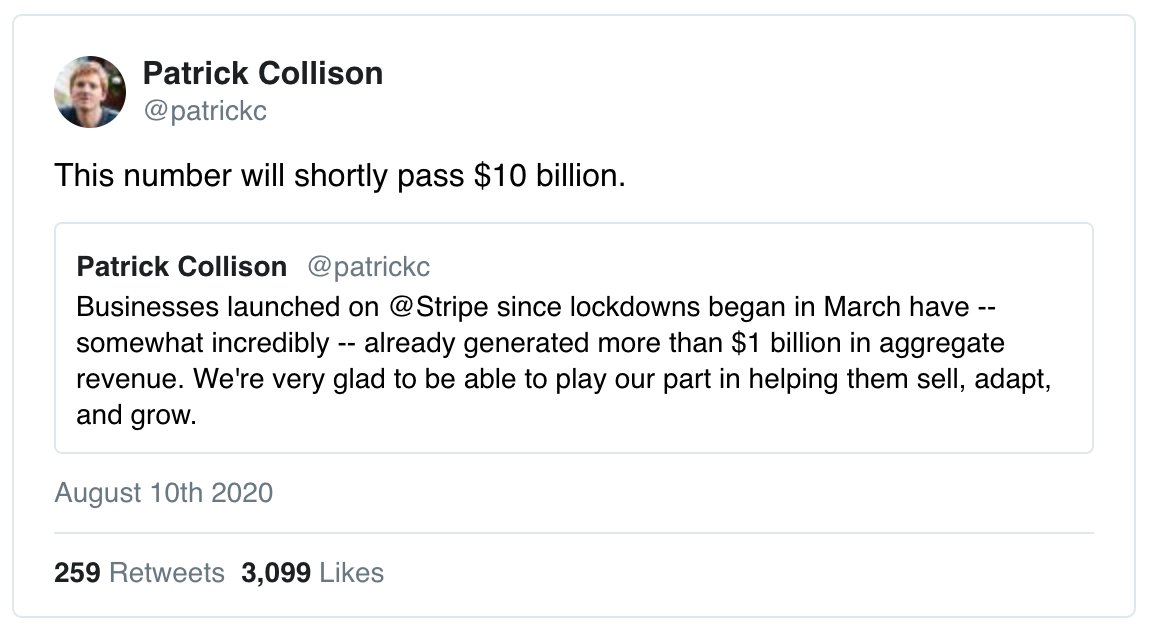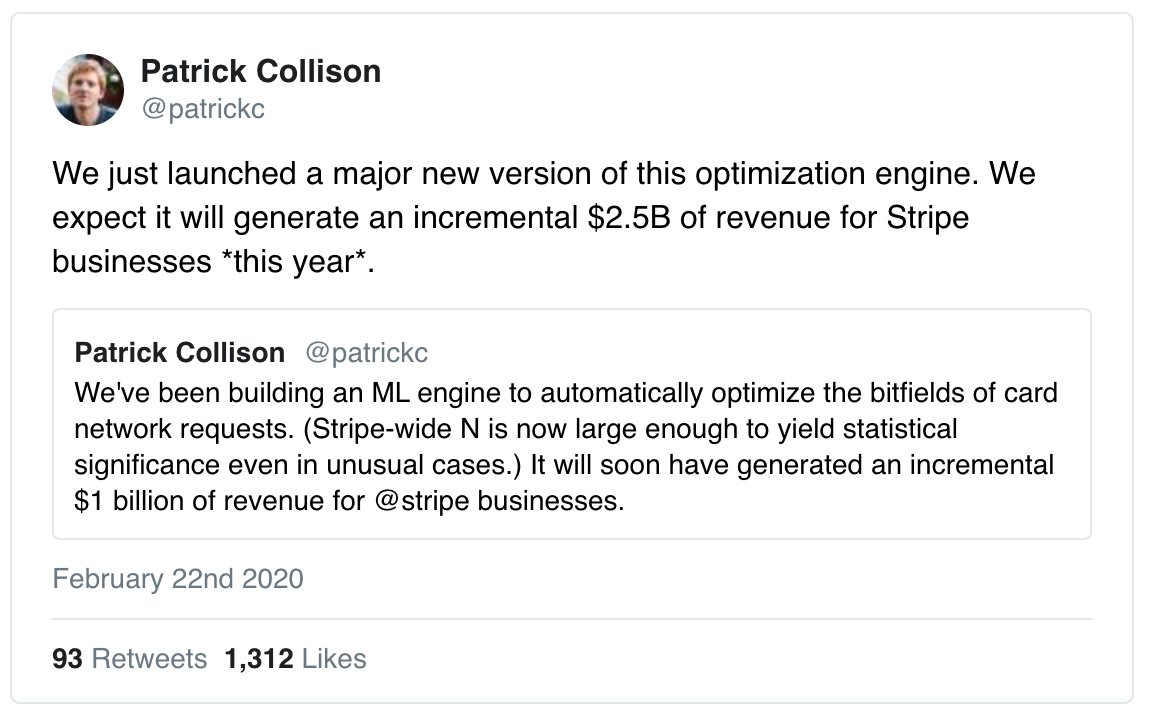Have been reading so much about @stripe that I wanted to understand how it reached where it is today. And turns out that it's phenomenal business. So, a  on Stripe - the payment infrastructure company
on Stripe - the payment infrastructure company 
 on Stripe - the payment infrastructure company
on Stripe - the payment infrastructure company 
At a time when most financial products were being sold to finance teams, Stripe began building a payment product that suits the needs of engineers - because, with all the startups that were coming up, they believed that engineers would decide which payment infrastructure to use.
Started by brothers @patrickc & @collision, Stripe provided a few lines of code that developers could embed on their business website and start accepting payments. Today they are a full-blown payment infrastructure business servicing all kinds of payments on all mediums.
Stripe's simple business model is to charge money on each transaction and a fee. Typically, it charges 2-3% of the total transaction value and a fee for each transaction, depending on the geography you are in. Obviously, more number of txns meanS more revenue for Stripe.
Within a decade of starting, Stripe is servicing startups and enterprises alike. It moved upstream and added a sales function to cater to enterprises. But even today, new businesses are launching on Stripe - as of Aug 2020, new businesses had generated $10B in revenue for Stripe.
But Stripe also faces challenges. For instance, payments is still a very commoditized space today. And Stripe faces stiff competition in each vertical it is in. Competitors like Paypal, Adyen, Square are directly competing with it on multiple fronts.
Moreover, Stripe isn't as global as it appears. Even though it accepts payments from people in 195 countries, it only allows businesses in 40 countries to accept payments. Stripe realizes this and is trying to bridge the gap by acquisitions in new geos, like Paystack in Africa.
Another challenge is that a major chunk of its revenue is concentrated with a few customers. @Shopify alone was generating $350M in revenue for Stripe in Jan last year, and that number would probably have doubled by now due to the explosion of e-commerce.
But Stripe focuses on the long tail businesses as a strategy and makes more margin there while keeping costs for bigger businesses like Shopify low. This keeps Shopify away from competitors and allows Stripe to gather a massive amount of data to create better products. Win-Win.
This strategy seems to be working out for them as well. Doing business with bigger customers at lower margins makes sense for them as businesses start buying more products from Stripe. 94% of Stripe's customers use multiple products and 84% use Stripe in multiple countries.
Stripe's moats are some of the strongest moats we have seen across organizations:
Scale Economies - Stripe's revenues increase with its client's business. And at that scale, even the smallest optimizations in Stripe's products lead to huge differences in revenues.
Scale Economies - Stripe's revenues increase with its client's business. And at that scale, even the smallest optimizations in Stripe's products lead to huge differences in revenues.
Network effects - Stripe's Data Network effect comes from more users giving more data to Stripe to use to detect fraud and improve its acceptance rates. If I commit fraud on one website that uses Stripe, other websites that use Stripe get benefitted.
Positioning - When incumbents were focusing on finance teams and had complex sales cycles, Stripe let thousands of developers integrate with their product without any meetings. They were and are a product-first company that built a sales engine on top of it.
Switching Costs - Even though switching from Stripe to a competitor like Adyen is not technically difficult, but it requires prioritization of resources. In most cases, the risks that come along with switching a payment processor are too much to save a few bucks by switching.
Process Power - Clear company objectives, powerful internal tools and written comms, and high caliber employees, allow Stripe to execute really fast. As a result, Stripe publishes updates to its API 16 times a day - its product gets better at an unmatchable accelerating rate.
On top of everything, Stripe has created a trusted brand. When competitors are neck-to-neck in functionality and price, a bigger brand will always win. Brand and culture allow Stripe to attract the best talent who want to work with other talented minds.
A good read in detail on Stripe here by @packyM: https://notboring.substack.com/p/stripe-the-internets-most-undervalued-ec3
PS: He also runs an amazing newsletter which is definitely recommended.
PS: He also runs an amazing newsletter which is definitely recommended.
And this great account of working at Stripe by @patio11 https://www.kalzumeus.com/2019/3/18/two-years-at-stripe/

 Read on Twitter
Read on Twitter



